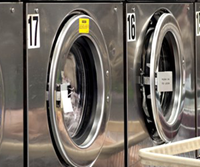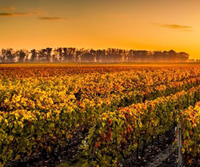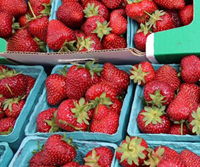Nurseries
Are you aware of the amount of water wastage in this sector?
Whether you run a production, wholesale, or retail site, an adequate supply of water is always important. However, you may not be aware of the large amount of water wastage. The Nursery and Garden Industry Australia's (NGIA) Best Practice Guidelines states: 'Water use efficiencies as low as 10% are common in Australian nurseries.'
Significant profits can be made from efficient water use
- Your water bills are significantly reduced.
- Water recycling and runoff management means you can re-use water for free.
- Water efficiency also encourages good business practices.
- The uniformity of crops increases, as does their quality.
- Your dispatch costs are also reduced.
Three main areas to focus on water efficiency in nurseries are:
Irrigation
Some nurseries irrigate all plants to the needs of the driest, most water thirsty plant. This may mean that up to 80% of plants are receiving too much water! Irrigation can be designed and managed in a way that avoids this.
Water recycling
Recycling the water you do use means your consumption of mains water goes down and limits the amount of runoff from your site.
Runoff management
Managing runoff has many benefits; one of which is to help recover used water safely for treatment and recycling.
Water efficiency doesn’t necessarily mean buying new products
It's often a matter of good site design and management. This includes activities like arranging plants for efficient water application and educating staff. Develop a management plan that encourages all workers to get involved.
If you're planning to incorporate water efficient practices into your business, seek expert advice. The NGIA can provide information on training courses and sources of detailed information. Also, remember to consult your local council/shire, your water authority and your electricity supplier on local issues and regulations.
Other benefits of saving water in nurseries:
- A water efficient nursery will reduce your water bills.
- Recycling water can reduce fertiliser needs by up to 30%, as excess water doesn’t leach it out of the pots.
- Efficiently and evenly applying water improves the health of your plant stock and means fewer diseased plants are discarded.
- Water efficient nurseries can reduce their impact on the environment by reducing pesticide, nutrient, and pathogen flow into the surrounding streams.
- A water efficient nursery contributes less to stormwater flow, reducing the need for costly public stormwater projects.
- A water efficient nursery can look tidy and organised. Low run-off cuts down on the channelling of water, which can contribute to erosion.
- Water efficient management can improve the image of the business, by showing that you care for the environment.
- Water efficient nurseries are well prepared for the occurrence of drought.

How good irrigation can help you save water
- Work out the special features of your nursery, then consult an accredited irrigation designer. This will make sure the irrigation system will be efficient, practical, and suitable.
- Fix water-efficient nozzles to overhead sprinklers and apply the water evenly.
- Try to use pot space efficiently to cut down on water that is lost between plants.
- If suitable, install sub irrigation or drip irrigation systems. These can produce water savings of up to 75% compared to overhead sprinklers.
- Set up wind breaks around your lot to cut down on water lost to wind and transpiration. These will also protect you plants and irrigation equipment.
- Ensure your irrigation system meets the standard recommended by the Nursery Industry Association of Australia.
- Manage your irrigation system correctly. Choose a system which allows automatic shutdown, moisture sensors, and can apply water at different rates to different parts of the nursery.
- Contact the industry association for more detailed advice and information on courses available.
Water recycling
- Filter and remove solids before recycling.
- There are various ways to treat and disinfect your water. Determine what your requirements are before deciding what treatment mechanism is necessary.
- Recycled water from production areas must be treated (filtering and disinfection) before being applied again. This is to ensure pathogens, pesticides, nutrients, and sediment are not transmitted to other plant stocks.
- Construct wetlands to trap and biologically treat runoff from the site. This water can then be reused for irrigation.
- Throughout the year, monitor quantity and quality of collected water.
- Rooftops and runoff from most non-production areas are a good source of irrigation water, with little need for treatment. Consider this option and see the section on rainwater harvesting for more information.
Managing runoff and retention
- Establish an erosion, sediment, and litter control plan, for the development and running of the nursery.
- Try to use natural features to control runoff, and use erosion control devices where necessary. This will enable you to collect good quality water for reuse.
- Talk to your local municipal council for more information on local requirements.
Discover ways to save water in more areas of the business sector:
|
Commercial laundries |
Viticulture |
Horticulture |



